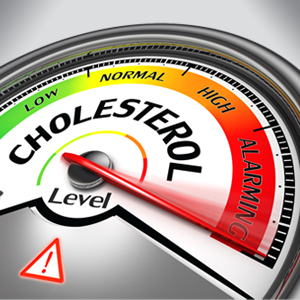
Remember the popular “Limbo Rock” song that asked dancers how low could they go under the limbo stick?
Now, some doctors are asking “How low can you go?” when it comes to LDL cholesterol levels. LDL, or "bad" cholesterol, is the main source of cholesterol buildup and blockage in the arteries.
While the National Heart, Lung and Blood Institute cites less than 100mg/dL as optimal, there is new data from the FOURIER trial that reduction of LDL to a median of 30 mg/dL with the PCSK9 inhibitor evolocumab in patients with heart disease was associated with lowered risk for cardiovascular events such as cardiovascular death, heart attack and stroke.
Trial says very low is safe
Furthermore, results from a clinical trial led by investigators at Brigham and Women’s Hospital found that in a high-risk population, aiming for very low LDL cholesterol levels – less than 10 mg/dL – safely resulted in lowering risk of cardiovascular events.
“These new cholesterol lowering drugs were actually in trial here at Baystate Medical Center. They block a protein called PCSK9, which ultimately improves the liver’s ability to remove cholesterol from the blood,” said Dr. Quinn Pack, a preventive cardiologist in the Heart & Vascular Program at Baystate Medical Center.
The new medications are injected every two to four weeks by patients, similar to the way a diabetic patient injects their insulin.
Price is a big concern
“Although side effects are minimal and usually limited to injection site reactions, the biggest concern over these new medications is their cost. The list price is $14,000 per year. Economic models have found that the price would need to drop to about $4,000 per year before these medications would be considered remotely cost-effective,” said Dr. Pack.
Adding further evidence that lower is better, in June 2015 another study was published known as the IMPROVE-IT trial. At the time, it was unclear if there were benefits to lowering LDL to less than 70 mg/dL, but this study showed that lowering cholesterol levels by 20% to about 50 mg/dL reduced the risk of heart disease by 7%. Importantly, this was the first trial to show that a medication other than a statin could reduce heart disease risk.
“Overall, these studies have really strengthened the “lower is better” hypothesis when it comes to LDL cholesterol. And, so far, we have not found an LDL level below which there are clear side effects, even at LDL levels less than 30 mg/dL. The guidelines have not yet caught up with these trial findings, but I now regularly try to get my high-risk patients’ LDL cholesterol levels less than 50 and even less than 30, if I can," said Dr. Pack.
What is cholesterol?
Cholesterol is a waxy substance used in making the walls that surround cells and in making a number of hormones used in human metabolism. Cholesterol is manufactured in the liver and is found in every cell in the human body. It travels through our bloodstream with the aid of lipoproteins, which can deposit cholesterol in the blood vessels, forming plaque and increasing one’s risk of heart attack and stroke.
The National Cholesterol Education Program currently recommends that adults age 20 and older have their cholesterol checked every five years.
Cholesterol levels increase as people age and can change significantly depending on dietary habits, so even if your cholesterol levels were normal in the past, it’s still a good idea to get your cholesterol checked every five years,” said Dr. Pack.
What about good cholesterol?
In addition to LDL, doctors are also concerned with high-density lipoprotein HDL, referred to as good cholesterol, with 40-59 md/dL considered acceptable, but 60 mg/dL and higher even better and considered to be protective again heart disease.
Many risk factors contribute to having high or low cholesterol, including diet, lack of exercise, excess weight, age, sex, race (African Americans and Hispanics are at greater risk for developing high cholesterol), alcohol, and stress levels. For some, high cholesterol is inherited, but many times it is the result of eating too many trans fats, saturated fats, and dietary cholesterol from animal products. Some risk factors can be reduced by following a heart-healthy lifestyle, while others are beyond your control.
Although very low levels of LDL have been shown to reduce risk for heart disease the most, it is important to remember that any amount of cholesterol lowering reduces risk of heart disease. For example, if you have very high cholesterol levels (LDL level above 190 mg/dL), reducing your LDL to less than 100 mg/dL will substantially reduce your risk for a heart attack, even if your cholesterol levels don’t get into the 30-70 mg/dL range.
“For a patient who has had a heart attack, even if he or she has had perfect cholesterol levels, we still generally recommend taking a statin or other cholesterol medicine because these medicines reduce a person’s risk of having a second heart attack. For patients without prior heart disease, but with moderate to extreme levels of cholesterol, they should always be on statins, regardless of their risk factors and even if they lead a pristine lifestyle with plenty of exercise and a healthy diet,” said Dr. Pack.
For more info
If your doctor hasn't scheduled a cholesterol test for you, take control of your health and ask your primary care provider now to schedule a complete lipid panel screening (a blood test to check your levels).
Learn more about the Baystate Health Heart & Vascular Program, or find a provider.